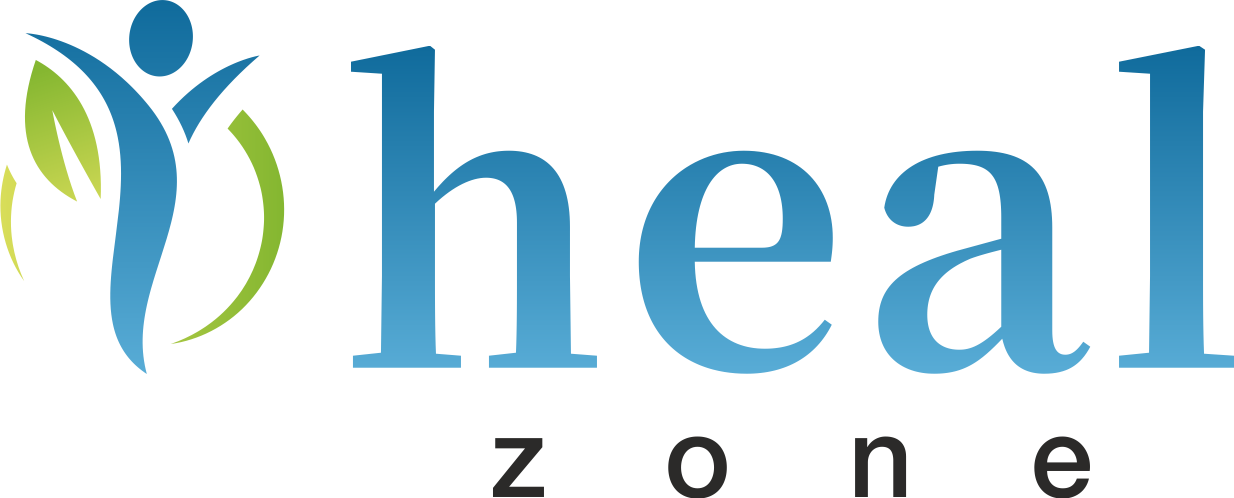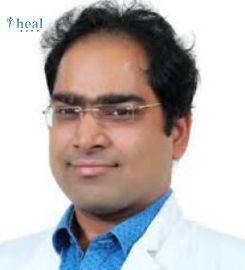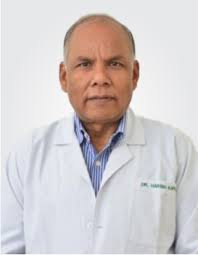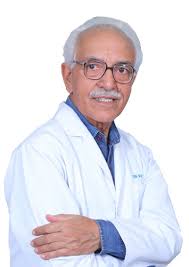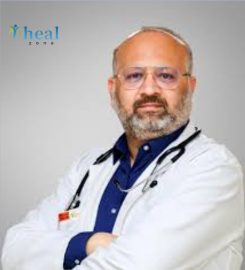What is Eye Cancer and What Are Its Common Types?
Eye cancer refers to a group of malignancies that originate in various tissues of the eye. These can be primary (originating in the eye) or secondary (spread from other parts of the body).
Major types of eye cancer include:
- Retinoblastoma: Most common in children, affecting the retina
- Uveal Melanoma: Affects the uvea (iris, ciliary body, choroid)
- Ocular Lymphoma: Typically affects the retina and vitreous
- Eyelid Tumors: Basal or squamous cell carcinoma
- Orbital Tumors: Arise in the tissues surrounding the eyeball
Understanding the type and stage of cancer is critical to determine the best treatment approach.
What Are the Symptoms and Risk Factors of Eye Cancer?
Early diagnosis of eye cancer is essential, as symptoms often go unnoticed. Common signs include:
- Blurred or reduced vision
- A visible growth or dark spot on the eye
- Eye redness or irritation
- Bulging of one eye (proptosis)
- Unexplained eye pain
- White reflex in pupil (especially in children)
Risk factors may include:
- Family history of eye tumors (e.g., retinoblastoma)
- Fair skin and excessive sun exposure (linked to melanoma)
- Weakened immune system
- Certain genetic mutations (RB1 gene in children)
Early detection and timely intervention significantly improve survival and vision outcomes.
What Types of Treatments Are Available for Eye Cancer in India?
India offers a comprehensive range of modern treatment options for eye cancer based on cancer type, location, and severity:
Surgical Treatments:
- Enucleation: Removal of the eye, often for advanced intraocular cancers
- Exenteration: Removal of the eye and surrounding tissue in severe cases
- Tumor excision or biopsy: For localized eyelid or conjunctival tumors
Radiation Therapy:
- Plaque Brachytherapy: Targeted radiation using a small disc placed near the tumor
- External Beam Radiation Therapy (EBRT)
Chemotherapy:
- Systemic Chemotherapy: For tumors that may have spread
- Intra-arterial Chemotherapy: Direct drug delivery to the eye (especially for retinoblastoma)
Laser or Cryotherapy:
- Laser photocoagulation or cold-based therapy for small tumors
India's multimodal treatment approach ensures patients receive personalized cancer care using the latest global protocols.
What Is the Standard Eye Cancer Treatment Protocol for International Patients in India?
India follows globally aligned and patient-friendly cancer care pathways. Here’s a step-by-step protocol:
1. Pre-Arrival (Teleconsultation):
- Case history review
- Request for medical records, reports, or scans
- Initial quote and visa support letter
2. On Arrival – Diagnostic Phase:
- Comprehensive eye examination
- Blood tests, Ultrasound B-scan
- MRI/CT Scan or Fundus Imaging
- Fine-needle aspiration biopsy (if needed)
3. Multidisciplinary Team Evaluation:
- Oncologist, ophthalmologist, and radiologist team create a treatment plan
4. Treatment Phase (Inpatient or Outpatient):
- Surgery, chemotherapy, radiation or combination
- Typically lasts 1–4 weeks, depending on complexity
5. Post-Treatment Monitoring:
- Regular follow-up imaging
- Visual function checks
- Remote (telehealth) reviews for international patients
Most international patients can complete diagnosis and primary treatment within 3–4 weeks, with ongoing virtual follow-up from home.
Why Should International Patients Choose India for Eye Cancer Treatment?
India is rapidly emerging as a top destination for international cancer care for several compelling reasons:
Advanced Technology: India uses high-end diagnostic and therapeutic tools such as MRI-guided radiotherapy, cyberknife, and plaque therapy
Globally Accredited Oncology Centers: Facilities meet or exceed international treatment standards
Highly Experienced Oncologists: Specialists with training in the US/UK and expertise in ocular oncology
Cost-Efficiency: Save up to 70% compared to Western countries
Integrated Medical Tourism Services: Visa help, language interpreters, recovery accommodation
India offers world-class treatment with holistic support, ensuring a safe and comfortable experience for foreign patients and their families.
Why Choose Healzone for Eye Cancer Treatment in India?
Healzone is a trusted name in global medical travel, offering international patients a seamless, affordable, and personalized healthcare experience in India. Here's why patients choose Healzone for eye cancer treatment:
Personalized Case Management: Dedicated coordinators handle everything from initial consultation to recovery and post-treatment care.
Verified & Accredited Facilities: Healzone works only with top-tier, internationally certified oncology centers using the latest eye cancer protocols.
Cost Transparency: No hidden fees — clear, detailed treatment estimates shared before travel.
Visa & Travel Support: End-to-end assistance for medical visas, airport pickup, hotel booking, and interpreter services.
Aftercare Coordination: Healzone provides remote follow-up assistance after you return to your home country, ensuring peace of mind.
Healzone ensures that your journey for eye cancer treatment is clinically safe, emotionally supportive, and financially stress-free.
What Devices and Medical Technologies Are Used in Eye Cancer Treatment in India?
India uses a range of globally approved diagnostic and treatment devices for managing eye cancer with high precision.
Diagnostic Equipment:
- Fundus Photography & Fluorescein Angiography: Detects tumors inside the eye
- Ultrasound B-Scan & OCT (Optical Coherence Tomography): Measures tumor size and structure
- MRI/CT Scans: Detect tumor spread and evaluate adjacent tissue
- Biopsy Instruments: For minimally invasive tumor sample collection
Treatment Technologies:
- Plaque Brachytherapy Systems (Ruthenium/Iodine Discs): Directly radiate tumor without damaging healthy tissue
- CyberKnife® Radiosurgery: Non-invasive radiation delivery to deep-seated eye tumors
- Microsurgical Instruments: For delicate eye tumor removal
- Intra-arterial Chemotherapy Pumps: For precise, eye-targeted drug delivery in retinoblastoma
These devices ensure maximum tumor control with minimal disruption to vision or surrounding tissue, making India an ideal choice for eye cancer care.
What Is the Full Cost Breakdown of Eye Cancer Treatment in India?
The cost of eye cancer treatment in India depends on the diagnosis, type of cancer, required treatment modality, and length of stay. Below is a typical cost breakdown:
|
Component |
Estimated Cost (USD) |
|
Initial Consultation & Eye Exams |
$50 – $100 |
|
Diagnostic Imaging (MRI, B-Scan, OCT) |
$200 – $500 |
|
Biopsy or FNAC |
$100 – $200 |
|
Surgery (Tumor removal/Enucleation) |
$1,500 – $2,500 |
|
Radiation Therapy (e.g., Brachytherapy) |
$1,200 – $2,000 |
|
Chemotherapy (1–3 cycles) |
$500 – $1,000 |
|
Medications & Post-op Care |
$300 – $600 |
|
Hospital Stay (3–7 days if needed) |
$300 – $500 |
|
Follow-up & Imaging |
$100 – $200 |
|
Total Estimated Cost |
$3,500 – $7,000 |
This is 60–75% lower than treatment in the US or UK while maintaining the same clinical quality. Patients can also opt for custom treatment packages based on tumor type and severity.
What Is the Typical Treatment Timeline and Procedure Duration for Eye Cancer in India?
The exact treatment timeline will vary depending on the diagnosis, stage, and treatment modality. Here’s a standard process and timeline for international patients:
|
Stage |
Duration |
|
Pre-arrival consultation |
1–3 days (virtual) |
|
Arrival and diagnostics |
2–4 days |
|
Treatment planning |
1–2 days |
|
Surgery or therapy initiation |
Within 1 week of arrival |
|
Active treatment phase |
1–4 weeks (based on complexity) |
|
Initial recovery |
3–7 days (longer for major surgery) |
|
Follow-up & final assessment |
Within 2–4 weeks |
Total stay in India: 3 to 4 weeks on average. Patients requiring long-term chemo or radiation may either extend their stay or return for follow-up cycles.
What Are the Advantages of Getting Eye Cancer Treatment in India?
India offers multiple advantages for international patients seeking high-quality, cost-effective treatment for eye cancer:
Affordable Yet Advanced Care: India provides the same level of cancer treatment as Western nations at up to 75% lower cost.
Multidisciplinary Expertise: Oncologists, ophthalmologists, radiologists, and pathologists collaborate on personalized care plans.
Access to Modern Techniques: Use of CyberKnife, Plaque Brachytherapy, Intra-arterial Chemotherapy, and 3D imaging ensures high treatment accuracy.
Short Waiting Times: Immediate access to diagnostics and surgery — no long queues like in some countries.
English-Speaking Care Teams: All communication is seamless, reducing stress for international patients.
Cultural Comfort & Medical Tourism Support: Healzone ensures total travel, accommodation, and emotional support throughout the treatment journey.
Whether it’s for a child with retinoblastoma or an adult with ocular melanoma, India offers a blend of precision oncology and compassionate care.
What Are the Risks or Complications of Eye Cancer Treatment?
While eye cancer treatment is generally safe and effective, potential complications depend on the treatment type and tumor stage. These may include:
Vision Loss or Impairment: Sometimes necessary if tumor threatens life or vision. Enucleation may be recommended.
Infection or Inflammation: Post-surgical or due to radiation therapy, usually manageable with antibiotics or steroids.
Radiation Side Effects: Dry eyes, cataracts, or optic nerve damage may occur with prolonged radiation exposure.
Chemotherapy-Related Side Effects: Fatigue, nausea, temporary hair loss, or lowered immunity.
Tumor Recurrence: Requires regular follow-up and imaging.
In India, these risks are proactively managed through expert pre-op evaluations, meticulous surgical techniques, and continuous monitoring.
What Aftercare Is Required Following Eye Cancer Treatment?
Aftercare plays a critical role in maintaining patient well-being and preventing recurrence:
Postoperative Care:
- Wound dressing and hygiene instructions
- Use of prescribed eye drops or antibiotics
- Follow-up checkups within 7–14 days post-surgery
Prosthetic Eye (If Enucleation is Done):
- Fitting of a custom ocular prosthesis (usually 4–6 weeks post-surgery)
- Regular polishing and replacement every 2–3 years
Radiation & Chemo Monitoring:
- Monthly blood tests
- Liver and kidney function checks
- Imaging every 3–6 months for the first year
Emotional & Psychological Support:
- Healzone provides access to counseling or therapy upon request
Remote Follow-ups:
- Virtual consultations with the oncology team post-discharge
- Reports can be emailed and reviewed without needing a return trip
Aftercare plans are tailored per patient by Indian oncologists, ensuring smooth recovery even after international travel.
Why Is India the Ideal Destination for International Eye Cancer Patients?
India is now a recognized global destination for eye cancer treatment due to the combination of:
Medical Excellence: Board-certified oncologists, ocular surgeons, and advanced cancer centers.
Affordable Pricing: Procedures that cost $20,000 in the West are available in India for less than $7,000.
Multidisciplinary Teams: India offers collaborative care — from diagnosis to recovery — under one roof.
Healzone Medical Tourism Services: Personalized assistance from visa to post-op care, travel, and telemedicine.
Trusted Reputation: High success rates, especially in treating pediatric cancers like retinoblastoma, make India a preferred choice for families.
Patients not only receive treatment but also compassionate care, clear communication, and a culturally welcoming environment
